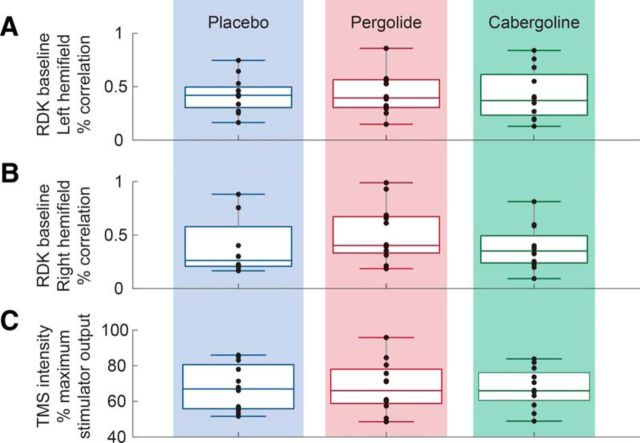Figure 4.
Baseline RDK visual motion coherence (percentage) for RDKs presented in the left visual space (A) or right visual space (B) and baseline TMS intensity (C) for all three drug conditions (with TMS intensity expressed as a percentage of stimulator maximum). At each of the 36 experimental sessions (12 subjects × 3 different drug sessions), baseline TMS intensity and RDK coherence was titrated to predetermined values (see Materials and Methods) to reduce intersubject and intersession variability. Baseline TMS intensity and RDK coherence were not significantly different across the three drug conditions, including for RDKs presented in the left visual space (A) or right visual space (B). Therefore, any difference across drug conditions cannot be due to differences in baseline visual cortex V5/MT excitability (which is correlated with the TMS intensity required to elicit phosphenes at a fixed probability) or RDK coherence.

